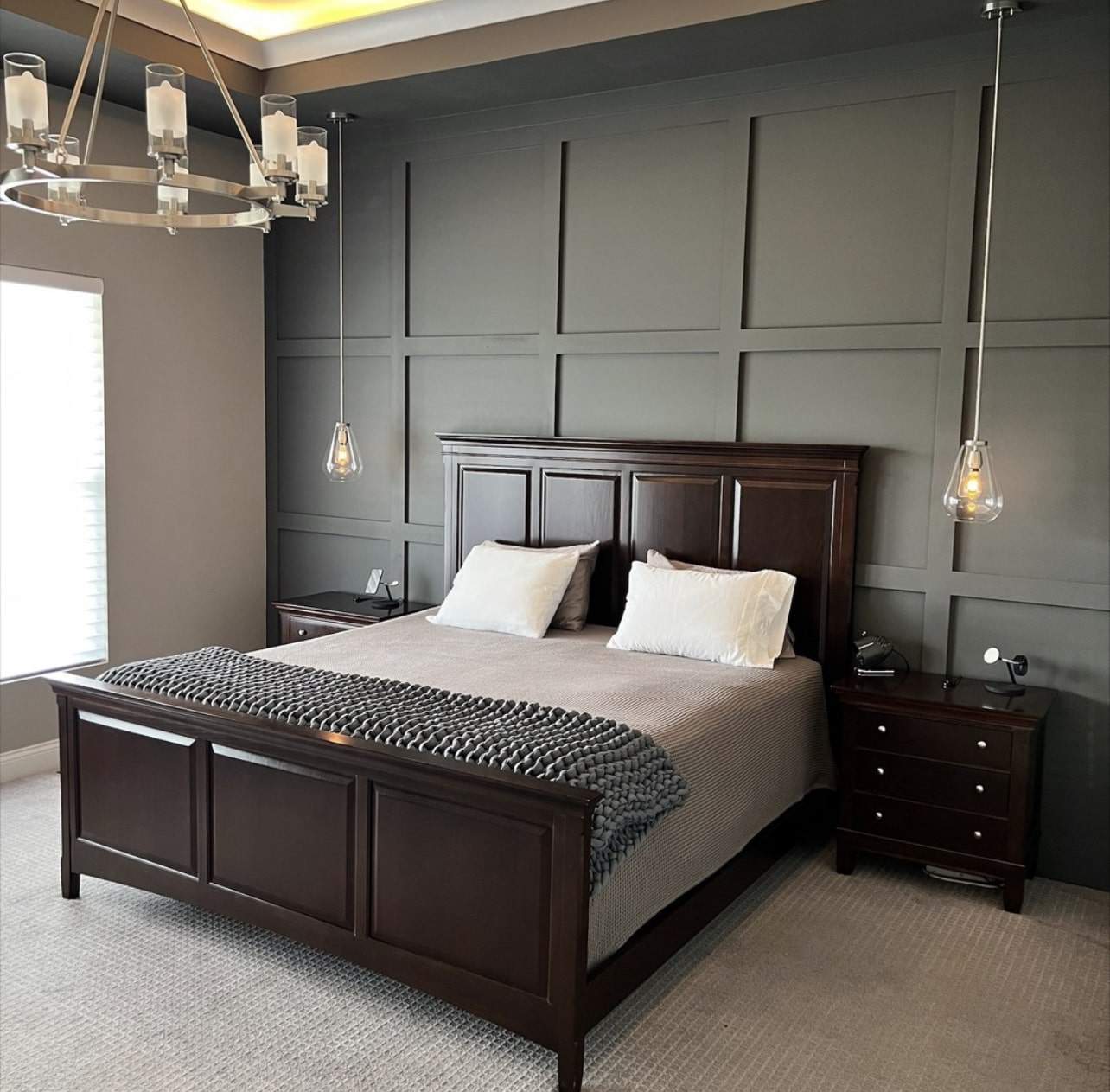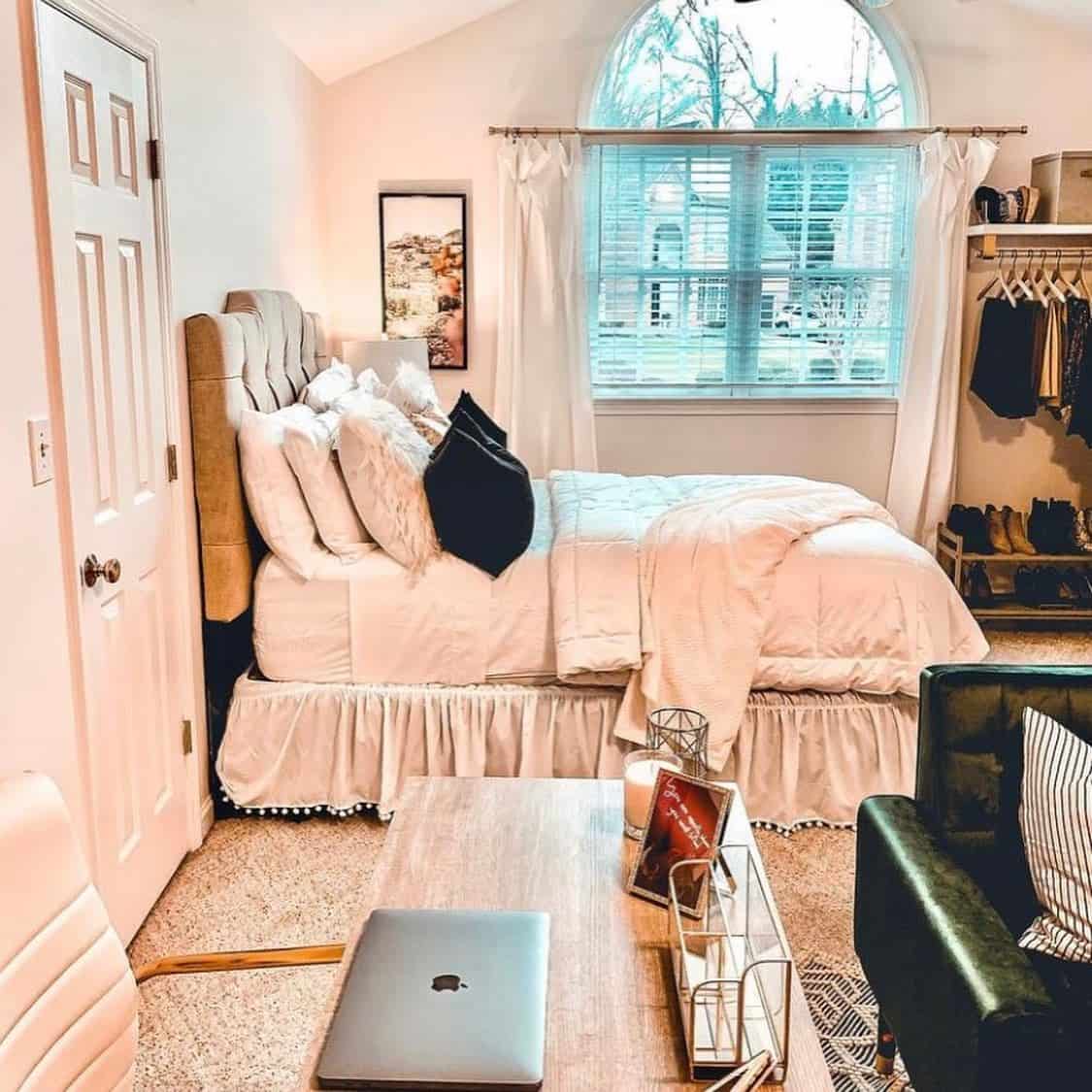A fresh coat of paint can completely transform a room—making it feel brighter, cleaner, and more inviting. But as the last stroke dries, a common question arises: Is it safe to sleep in a freshly painted room?
The concern isn’t just about the strong smell. It’s about the unseen chemicals in the air that could impact your health. Many homeowners worry about paint fumes, air quality, and potential side effects—especially for children, pregnant women, and those with respiratory issues.
So, how long should you wait before sleeping in a painted room? What makes low-VOC paints safer? And how can you speed up fume dissipation?
Let’s break it all down so you can enjoy your newly painted space without worrying about lingering fumes.
Why Does Fresh Paint Pose a Risk?
Understanding What’s in Paint Fumes
Paint is more than just color—it’s a blend of solvents, binders, pigments, and additives. The drying process releases chemicals into the air, including Volatile Organic Compounds (VOCs).
-
VOCs evaporate as the paint dries, causing that recognizable paint smell.
-
High-VOC paints release more fumes, increasing exposure risk.
-
Some VOCs, like benzene and formaldehyde, have been linked to respiratory issues and long-term health effects.
While the odor may fade after a few days, VOCs can linger in the air for weeks, affecting indoor air quality long after the walls are dry to the touch.
Common Symptoms of Paint Fume Exposure

Freshly painted rooms can pose health risks, especially when using high-VOC paints. Infants and children are particularly vulnerable, often experiencing headaches, nausea, and respiratory irritation from lingering fumes. Pregnant women face an increased risk of complications due to prolonged exposure to harmful chemicals.
People with asthma and allergies may find their symptoms worsening, as VOCs can trigger breathing issues and discomfort. Elderly individuals are also more sensitive to these compounds, making them more susceptible to irritation.
Even the general population isn’t immune—dizziness, sore throats, and eye irritation are common reactions when exposed to strong paint fumes.
Opting for low-VOC or zero-VOC paints can significantly reduce these risks, making indoor painting safer for everyone.
How Long Do Paint Fumes Last?
The duration of paint fumes depends on VOC content and ventilation.
| Paint Type | VOC Content | How Long Fumes Linger |
|---|---|---|
| Traditional Paint | High VOC | 3-7 days (or longer in closed spaces) |
| Low-VOC Paint | Reduced VOC | 24-48 hours |
| Zero-VOC Paint | Minimal VOC | A few hours |
Low-VOC vs. Traditional Paint – Which Is Safer for Sleeping?
Not all paints are created equal. If you want to minimize exposure, choosing the right paint is key.
Traditional High-VOC Paint: Why the Smell Lasts Longer
High-VOC paints contain strong solvents like formaldehyde and benzene, which release harmful fumes as the paint dries. These chemicals take longer to off-gas, meaning VOCs continue to linger in the air long after application.
In poorly ventilated spaces, the odor can persist for weeks, making it uncomfortable and potentially unsafe to sleep in the room too soon.
Low-VOC Paint: Does It Make a Difference?
Low-VOC paint contains significantly fewer solvents, reducing the amount of harmful emissions released into the air. It dries faster than traditional paint, allowing fumes to dissipate more quickly. This makes it a safer option for bedrooms, nurseries, and homes with individuals sensitive to strong odors and airborne chemicals.
Zero-VOC Paint: The Best Option for Immediate Use
Zero-VOC paint contains no added VOCs, making it the safest choice for indoor spaces. With little to no odor, it allows homeowners to use freshly painted rooms sooner without worrying about strong fumes.
However, some brands still include preservatives or biocides, so proper ventilation is still recommended to ensure the best indoor air quality.
How Long Should You Wait Before Sleeping in a Freshly Painted Room?
If you’ve just painted a room, the safest option is to wait before sleeping in it.
| Paint Type | Recommended Wait Time |
|---|---|
| High-VOC Paint | At least 72 hours (longer if the smell is strong) |
| Low-VOC Paint | 24-48 hours with proper ventilation |
| Zero-VOC Paint | 2-8 hours, but faster with airflow |
However, drying time isn’t the only factor.
What Affects Drying Time & Air Quality?
-
Room Size & Ventilation – Smaller, enclosed rooms trap VOCs longer.
-
Paint Thickness – Multiple thick coats take longer to off-gas.
-
Weather & Humidity – High humidity slows drying time and VOC evaporation.
How to Speed Up Paint Fume Dissipation
If you want to return to your room faster, here’s how to clear out fumes efficiently.
Ventilation Strategies for Faster Air Exchange
Proper ventilation is key to reducing paint fumes and improving indoor air quality. Opening windows and doors creates cross-ventilation, allowing fresh air to circulate and carry VOCs out of the room. This simple step can significantly speed up the dissipation of odors, especially when using low-VOC paint.
For even better airflow, use box fans or exhaust fans to push fumes outside. Positioning a fan near an open window helps direct airborne chemicals out more efficiently.
Running an air purifier with a carbon filter adds another layer of protection. These purifiers are designed to absorb VOCs, capturing harmful particles and improving overall air quality. Combining these strategies ensures a safer, fresher space in less time.
Natural Ways to Neutralize Paint Odors
| Method | How It Helps |
|---|---|
| Baking Soda | Absorbs odors when placed in bowls around the room |
| Activated Charcoal | Traps chemical particles from the air |
| Onions in Water | Absorbs paint fumes naturally |
| Vinegar Bowls | Helps break down chemical odors |
| Houseplants (Peace Lily, Snake Plant, Aloe Vera) | Filters out airborne toxins |
Choosing the Right Time to Paint
Timing plays a crucial role in how quickly paint fumes dissipate. The best seasons for painting are spring and fall when you can leave windows open for extended periods. Fresh air helps speed up the drying process and reduces VOC buildup, making the space safer to use sooner.
Avoid painting in humid or rainy weather. Excess moisture in the air slows the drying time, trapping low-VOC and traditional paint fumes indoors for longer. This can make it difficult for rooms to air out properly.
If possible, schedule painting at least a few days before moving into the room. This extra time allows VOCs to off-gas, ensuring a fresher, healthier environment before you sleep or spend extended time in the space.
Common Mistakes That Prolong Paint Fumes

Even with the right paint, some mistakes can trap fumes inside, making them last longer.
Closing the Room Too Soon
-
Mistake: Sealing off a freshly painted room locks in VOCs.
-
Solution: Keep doors open for air circulation.
Using Air Conditioning Instead of Ventilation
-
Mistake: AC recirculates fumes instead of removing them.
-
Solution: Use fresh outdoor air for the first 48 hours.
Choosing Low-VOC Paint but Using High-VOC Primers
-
Mistake: Some primers contain more VOCs than paint itself.
-
Solution: Choose low-VOC or zero-VOC primers for better air quality.
When to Consult a Professional Painter
Hiring a professional painter ensures a safer and more efficient process, reducing exposure to harmful chemicals. With the right expertise and products, they can help minimize odors and speed up drying time.
How a Professional Painter Can Help
A skilled painter uses low-VOC and low-odor products to reduce harmful emissions. They also understand the best ventilation techniques to clear fumes quickly, ensuring better indoor air quality. Proper application matters, too—an even coat dries faster, shortening the time you need to wait before using the room.
Questions to Ask Before Hiring a Painter
Before hiring a painter, ask about their experience with low-VOC and zero-VOC paints. Understanding their process can help you make an informed decision.
-
Do you specialize in low-VOC and zero-VOC paints?
-
How long should we wait before sleeping in a freshly painted room?
-
What ventilation methods do you use to minimize paint odors?
A professional approach makes a difference, giving you peace of mind while enjoying a freshly painted space sooner.
Final Thoughts: How to Sleep Safely After Painting
Choosing the right paint and taking proper precautions can make a big difference in indoor air quality. Traditional paints with high VOC levels require at least 72 hours before a room is safe for sleeping. In contrast, low-VOC paints need about 24–48 hours, while zero-VOC options can be ready within just a few hours.
Good ventilation is essential. Keeping windows open, using air purifiers with carbon filters, and placing odor absorbers like baking soda or activated charcoal around the room can help speed up fume dissipation. These simple steps can make the space more comfortable and reduce exposure to lingering chemicals.
If you’re unsure about the safest approach, consulting a professional painter can provide peace of mind. They can recommend low-VOC products, ensure proper ventilation, and help you enjoy a freshly painted space without unnecessary risks.
Talk to a professional today and breathe easier in your newly refreshed home!





